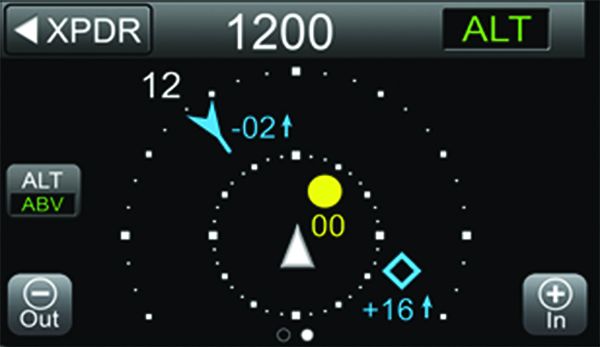It was a beautiful day over South Florida, perfect for my flight instructor’s mission of racking up some practice approaches. I was in the right seat, acting as her safety pilot. We had chosen some non-towered airports for this practice, and were acutely aware we weren’t the only people out flying this fine day.
In addition to the electronic flight bag apps running on our respective tablets, the panel-mounted multi-function display was showing us ADS-B In traffic in the vicinity. We were clearly announcing our position and intent throughout, listening closely to the CTAFs at the airports we were using and then coordinating our plans with other pilots in the area, as needed. All was going well.
After making all the calls and at about halfway down the final approach leg at one airport, we were both startled to hear a pilot announce he was turning final for the same runway were approaching. There was nothing on the ADS-B traffic displays. I had my head on a swivel, to include looking behind us, but couldn’t spot the traffic. We were nearing that procedure’s minimum descent altitude anyway, so the approach counted. Unable to spot the intruder, the smartest thing we could do was to initiate the go-around, fly to the missed approach point while climbing and head off for the holding pattern. Which is what we did.
We rolled into the turn toward the hold as we passed over the airport and finally saw the announced traffic, which was on the ground now and taxiing to its hangar. Given the timing and the distances, the traffic had to have been right under or behind us down the straight-in final we were flying. The only thing we heard from that pilot on CTAF was the single announcement he was on final approach. He never acknowledged us.
Both the CFI and I have been doing this long enough to know we did everything right, and later agreed on that point. The intruder either wasn’t paying attention or didn’t care, and I’m not sure which is worse. The bottom line for me is that, while it’s a big sky, bottlenecks like the final approach leg deserve extra attention, communication and courtesy.
Fly defensively.
Have you encountered a situation or hazardous condition that yielded lessons on how to better manage the risks involved in flying? Do you have an experience to share with Aviation Safety’s readers about an occasion that taught you something significant about ways to conduct safer flight operations? If so, we want to hear about it.
We encourage you to submit a brief (500 words) write-up of your Learning Experience to Aviation Safety for possible publication. Each month, Aviation Safety publishes a collection of similar experiences sent to us by readers. Sharing with others the benefit of your experience and the lessons you learned can be an invaluable aid to other pilots.
You can send your account directly to the editor by e-mailing it to [email protected]. Put “Learning Experience Submission” in the subject line; add your name and daytime telephone number at the bottom of the e-mail.
Your report will be considered for publication in the Aviation Safety’s readers’ forum, “Learning Experiences,” and may be edited for style and length. Anonymity is guaranteed if you want it. No one but Aviation Safety’s editor is permitted access to the reports. Your name and telephone number are requested only so that the editor can contact you, if necessary.
While we can’t guarantee your submission will get published, we can guarantee that we’ll closely review and consider using it.
All Learning Experience submissions become the property of Aviation Safety and may be republished.





The author and CFI learned a few valuable lessons we must keep in mind as we fly with the nifty boxes of ADSB/Out and ADSB/In: Not everyone is equipped with ADSB/Out, those who have electrical systems (and operational radios) may – or not – have radios on or correctly tuned to CTAF, aircraft owners do not have to equip with ADSB/Out if they don’t operate in airspace where it is required, and lotsa NORDO aircraft without electrical systems may – or not – carry or USE a working handheld radio tuned to the correct CTAF.